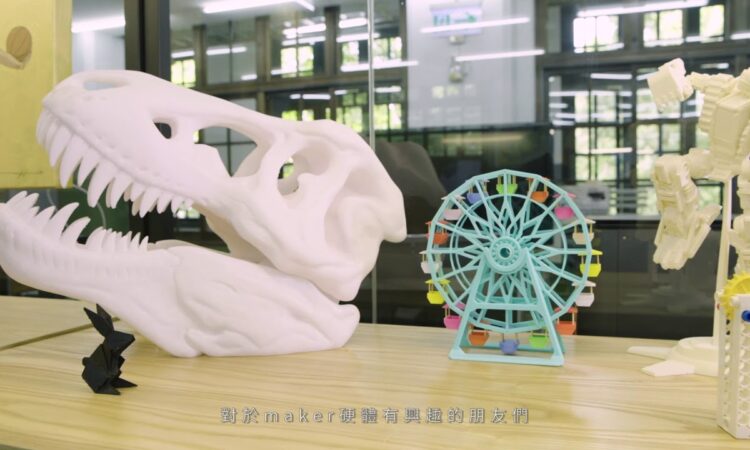如果您對下列項目有興趣,請與美國資料中心聯絡。電話:2723-3959 轉 202。
五月二十八日 (星期一) 陣亡將士紀念日,放假。
To receive or reserve any of these items, please contact Information Resource Center at 2723-3959, ext. 202 or aitirc@mail.ait.org.tw.
May 28 (Monday) Memorial Day. Closed.
1. 美國在台協會處長梅健華腸病毒檢驗診斷國際研習營致詞。
Remarks by AIT Director Kin Moy at the Global Cooperation and Training Framework Enteroviruses Laboratory Diagnosis Workshop. 
AIT OT-1805, April 23, 2018, 2 pages.
“We consider Taiwan to be a vital partner, a democratic success story, and a force for good in the world. And these programs demonstrate why Taiwan should be welcomed as part of the solution to global challenges, given its own significant experience overcoming many of these same issues.” (From AIT)
2. 美國商務部主管製造業副助理部長史宜恩智慧城市首長高峰會演講。
Remarks by U.S. Deputy Assistant Secretary of Commerce for Manufacturing Ian Steff at the Smart City Summit & Expo Mayor Summit. 
AIT OT-1804, March 28, 2018, 4 pages.
“I am confident that if we work together, share information on our smart city deployments, and ensure that all technology providers have a fair shot at smart city procurements, we will see unparalleled economic growth, job creation, and societal benefits in the near term.” (From AIT)
3. 2017年度《各國人權報告》- 台灣部分。 (全文英文)
Country Reports on Human Rights Practices for 2017: Taiwan. 
U.S. State Department, April 20, 2018, 22 pages.
Taiwan is a democracy governed by a president and a parliament selected in multiparty elections. In 2016 voters elected President Tsai Ing-wen of the Democratic Progressive Party to a four-year term in an election considered free and fair. Civilian authorities maintained effective control over the security forces. The most significant human rights issues included corruption and exploitation of foreign workers including forced labor. Authorities enforced laws prohibiting human rights abuses and prosecuted officials who committed them. There were no reports of impunity.” (From the U.S. State Department.)
4. Albert, Eleanor.
North Korean Nuclear Negotiations 1985 – 2018. 
Council on Foreign Relations, April 4, 2018, 28 pages.
“Nuclear negotiations between the United States and North Korea have proceeded in fits and starts across three decades and have failed to halt the advance of the North’s atomic weapons program.” (From Council on Foreign Relations)
5. Cordesman, Anthony H.
Stability in the Middle East: The Range of Short and Long-Term Causes. 
Center For Strategic & International Studies, April 9, 2018, 101 pages.
“The Middle East has long been one of the most unstable regions in the world, and there are no present prospects for change in the near future. This instability is the result of ongoing conflicts and tensions, and a variety of political tensions and divisions. It also, however, is the result of a wide variety of long-term pressures growing out of poor governance, corruption, economic failures, demographic pressures and other forces within the civil sector.” (From CSIS)
6. Kerr, Paul K. and Mary Beth D. Nikitin.
Nuclear Cooperation with Other Countries: A Primer. (PDF) 
Washington, D.C.: Congressional Research Service, April 3, 2018, 20 pages.
“In order for the United States to engage in significant civilian nuclear cooperation with other states, it must conclude a framework agreement that meets specific requirements under Section 123 of the Atomic Energy Act (AEA). Significant nuclear cooperation includes the export of reactors, critical parts of reactors, and reactor fuel. The AEA also provides for export control licensing procedures and criteria for terminating cooperation. Congressional review is required for Section 123 agreements; the AEA establishes special parliamentary procedures by which Congress may act on a proposed agreement.” (From CRS Report)

7. 談談特朗普總統對中國採取的關稅行動。
Trump’s China Tariffs Explained.
Share America, April 9, 2018, 3 pages.
“In response to China’s forced technology transfers, the Office of the U.S. Trade Representative (USTR) published for public comment a proposed list of Chinese goods imports that may be subject to an additional 25 percent tariff. The proposed list, which contains products that unfairly benefit from China’s industrial policies, is subject to a final determination after a public comment process. It has an estimated trade value of $50 billion.” (From Share America)
8. 2018 National Trade Estimate Report on Foreign Trade Barriers: Taiwan. (PDF)
Office of the United States Trade Representatives, April 3, 2018, 8 pages.
“The Office of the U.S. Trade Representative (USTR) released the 2018 National Trade Estimate (NTE), an annual report documenting foreign trade and investment barriers facing American exports around the world.” (From the USTR)
9. Supply Chain Vulnerabilities from China in U.S. Federal Information and Communications Technology.
The U.S.-China Economic and Security Review Commission, April 19, 2018, 52 pages.
“The report examines vulnerabilities in the U.S. government information and communications technology (ICT) supply chains posed by China, and makes recommendations for supply chain risk management.” (From the U.S.-China Economic and Security Review Commission)
10. Lewis, Logan T. and others.
Structural Change and Global Trade. (PDF) 
Board of Governors of the Federal Reserve System, April 2018, 48 pages.
“Services, which are less traded than goods, rose from 50 percent of world expenditure in 1970 to 80 percent in 2015. Such structural change restrained openness—the ratio of world trade to world GDP—over this period. We quantify this with a general equilibrium trade model featuring non-homothetic preferences and input-output linkages. Openness would have been 70 percent in 2015, 23 percentage points higher than the data, if expenditure patterns were unchanged from 1970. Structural change is critical for estimating the dynamics of trade barriers and welfare gains from trade. Ongoing structural change implies declining openness, even absent rising protectionism.” (From Board of Governors of the Federal Reserve System)
11. Martin, Michael F.
What’s the Difference? Comparing U.S. and Chinese Trade Data. (PDF) 
Washington, D.C.: Congressional Research Service, April 23, 2018, 12 pages.
“This report examines the differences in the trade data from the two nations in two ways. First, it compares the trade figures using the Harmonized Commodity Description and Coding System to discern any patterns in the discrepancies between the U.S. and Chinese data. This comparison reveals that nearly 90% of the difference in the value of China’s exports to the United States in 2016 was attributable to five types of goods. Those five types of goods, in order of the size of the discrepancy, were electrical machinery, machinery, toys and sporting goods, footwear, and optical and medical equipment. The second approach to examining the differing trade data involves a review of the existing literature on the technical and non-technical sources of the trade data discrepancies. The literature reveals that the leading sources of the discrepancies are differences in the list value of shipments when they leave China and when they enter the United States, and differing attributions of origin and destination of Chinese exports that are transshipped through a third location (such as Hong Kong) before arriving in the United States” (From CRS Report)

12. Kleinfeld, Rachel and others.
Renewing U.S. Political Representation: Lessons From Europe and U.S History. 
Carnegie Endowment For International Peace, March 12, 2018, 54 pages.
“Democracy in the United States faces a dilemma. Voters feel increasingly unrepresented by both of the dominant parties. Yet these parties now control large swaths of uncompetitive seats at the state and national levels, reducing options for new voices. Obvious solutions, such as increasing party representativeness or creating a third party, may increase polarization, which would likely impede governance. Examples of party revitalization in contemporary Europe and from U.S. history suggest that locally grounded movements that reinvigorate political competitiveness may offer a path forward. (From Carnegie Endowment For International Peace)
13. Gordon, Deborah and Madhav Acharya.
Oil Shake-Up: Refining Transitions in a Low-Carbon Economy. 
Carnegie Endowment For International Peace, April 2018, 8 pages.
“It is critical to assess how shifting to a low-carbon economy will impact oil refining—piecemeal or isolated policy efforts could lead to unintended consequences.”(From Carnegie Endowment For International Peace)
14. Lempert, Robert J. and others.
Is Climate Restoration an Appropriate Climate Policy Goal? 
Rand, April 6, 2018, 51 pages.
“This report offers an initial exploration of the concept of climate restoration — that is, approaches that seek to return atmospheric concentrations of greenhouse gases to preindustrial levels within one to two generations.” (From Rand)

15. Closing the STEM Gap.
Microsoft, April 5, 2018, 18 pages.
“The lack of female representation in STEM-related career fields continues to mature as an area of focus and Microsoft’s findings shine a bright light on the need to more accurately connect one’s purpose and creative pursuits with relevant STEM opportunities.” (From Microsoft)
















![Video Thumbnail [Recovered]-01](../wp-content/uploads/sites/269/Video-Thumbnail-Recovered-01-1-750x450.jpg)









